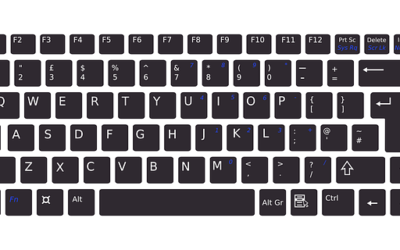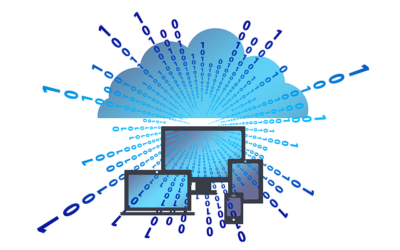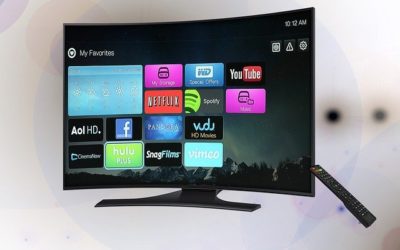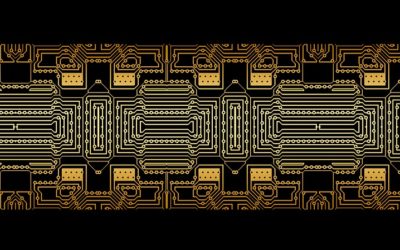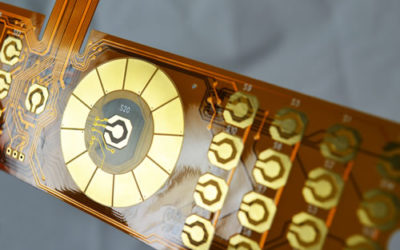News
No Results Found
The page you requested could not be found. Try refining your search, or use the navigation above to locate the post.
No Results Found
The page you requested could not be found. Try refining your search, or use the navigation above to locate the post.
No Results Found
The page you requested could not be found. Try refining your search, or use the navigation above to locate the post.
The Pros and Cons of Scissor-Switch Keyboards
Have you heard of scissor-switch keyboards? Not to be confused with mechanical-switch keyboards, they feature an interlocking design. Each key has two pieces that connect to each other like scissor blades. Pressing a key will engage these two pieces while completing a...
How Blue Phase Differs From Other LCD Technologies
Have you heard of blue phase? It's one of several liquid-crystal display (LCD) technologies. Originating in 2007, blue phase uses liquid crystals like all other LCD technologies. The liquid, organic crystals form the pixels. Blue phase, however, differs from other LCD...
When to Choose Projected Capacitive Over Surface Capacitive
Capacitive touchscreens are undoubtedly popular. Research shows that roughly nine in 10 touchscreens manufactured and shipped globally use capacitive technology. Capacitive touchscreens are able to detect touch commands by measuring capacitance. When turned on,...
What Is a High-Dynamic Range (HDR) Display?
High-dynamic range (HDR) displays are on the rise. Whether you're shopping for a new television, computer monitor or any other electronic display, you may come across HDR. Not to be confused with high-definition (HD), they are able to produce bold colors. Even if...
Single-Layer vs Double-Layer Flexible Printed Circuits (FPCs)
Not all circuits are made on a rigid substrate. Some of them feature a flexible substrate. Known as flexible printed circuits (FPCs), they've become increasingly popular in recent years. You can find FPCs in smartphones, tablets, medical devices and countless other...
5 Reasons to Choose Dome Arrays
Have you heard of dome arrays? They've become an increasingly popular switching solution. Dome arrays consist of a metal dome on a semi-elastic film that's applied to a circuit -- typically a printed circuit board (PCB). Like all switching solutions, they are used to...
Piezo vs Mechanical Switches: What’s the Difference?
Switches are the building blocks of nearly all electronic devices. Consisting of conductive paths, they are designed to control a circuit. Switches can open or close a circuit. An open circuit, of course, means that electricity can't flow all the way through it. There...
Technology tips worth knowing
OLED vs LED: Which Display Technology Is Best?
Two of the most common display technologies used to make smartphones, tablet computers, monitors, TVs and other devices are organic light-emitting diode (OLED) and light-emitting diode (LED). Based on their names alone, many people assume that these two technologies...
New Patent Reveals Game Boy Case for Touchscreen Devices
The iconic video game development studio Nintendo has filed a patent for a new Game Boy-style case for touchscreen devices. The case features the same design as the classic handheld video game console the Game Boy. However, this isn't just another ordinary protective...
Microsoft Unveils Touchscreen-Controlled Surface Studio 2
It's been nearly two years since Microsoft released the original, first-generation Surface Studio. Since then, the tech giant has been relatively quiet regarding a new model. But it appears that Microsoft is preparing to release a successor to the popular all-in-one...
Myths and Misconceptions About Human Machine Interfaces
Human machine interfaces (HMI) offer an interface through which a human operator can control a machine. It's somewhat of a catch-all term that covers a broad range of interfaces, most of which are used in industrial/commercial settings. But there are many myths and...
What is Display Motion Blur?
Motion blur is an all-too-common phenomenon that's found in liquid crystal displays (LCDs). Also known as HDTV blue and LCD blur, it's characterized by the streaking of moving objects in an otherwise still, static image; thus, mimicking the appearance of animation....
The Growing Trend of 3D Printing
3D printing has become a hot topic in recent years. Also known as additive printing, it refers to a unique manufacturing process in which materials are mechanically pieced together to create a three-dimensional object. 3D printing was once nothing more than a novel...
5 Key Differences Between Resistive and Capacitive Touchscreens
The vast majority of touchscreen devices today use either resistive or capacitive technology. We've discussed them before on our blog, but in case you missed it resistive touchscreens identify the origin of touch by pressing two layers together, whereas capacitive...

